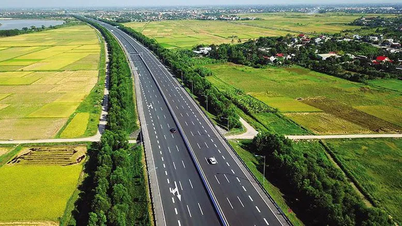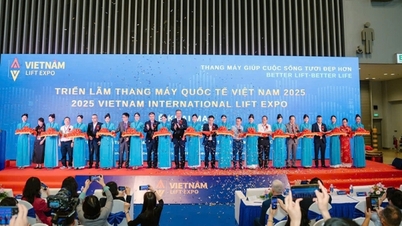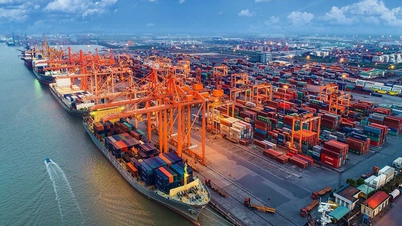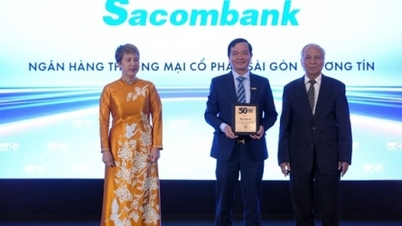Promoting PPP investment: Lessons learned from projects around the world
The public-private partnership (PPP) model has been applied in developed countries since the 1980s, bringing efficiency and benefits in socio -economic development and is also a valuable experience for Vietnam.
Active solutions to attract private resources
With the goal of promoting the strengths of both the public and private sectors for development, the public-private partnership (PPP) model has been applied and implemented by countries around the world and has become increasingly popular in recent decades.
The public-private partnership model is the state and investors jointly implement infrastructure development projects and provide public services on the basis of project contracts. With the PPP model, the state will set standards for service provision and the private sector is encouraged to provide services through a payment mechanism based on service quality. This is a form of cooperation that optimizes investment efficiency and provides high-quality public services, so this cooperation model will benefit both the state and the people.
According to statistics, there have been many famous projects that have applied the PPP model, such as: Construction of canals in France in the 18th century, bridges in London or the Brooklyn Bridge in New York in the 19th century. However, this model only really became popular in the world from the early 1980s.
Although not every country is successful, with more than 100 countries applying it quite effectively, it shows that this model is a positive solution in many countries, attracting the private sector to participate with the state to reduce the pressure on spending on public services of the Government .
Citing effective PPP projects, at a 2023 conference, Professor Akash Deep, Harvard Kennedy School, said that to increase the capacity of Queen Alia International Airport (Amman, Kingdom of Jordan) to 9 million passengers, Jordan has implemented a project to renovate the current terminal, design, construct and finance a new terminal, operate and maintain the airport under a 25-year Build-Operate-Transfer (BOT) contract.
With a bid of 55% of the total investment invited for bidding, the winning consortium APD, including enterprises from France, UAE, Kuwait, Jordan, Greece, UK... defeated four other international corporations.
In addition to the capacity criterion of 9 million passengers, the airport upgrade must also meet technical specifications on area for each passenger in each area, maximum queuing time, maximum baggage delivery time, etc.
Or another outstanding project is Lesotho Hospital, with the number of outpatient visits per year being 310,000, the number of inpatient admissions being 20,000 per year, but the compliance index in operation is always at 90% - 99%.
 |
| Queen Alia International Airport is one of the prominent projects invested under the PPP model. (Photo: aig.aero) |
Need to expand the scope of PPP project guarantees
Drawing on international lessons and experiences, Professor Akash Deep said that Vietnam’s PPP Law 2020 is an important step in accelerating and expanding the ambitious PPP program. However, the program lacks a framework to assess and manage contingent obligations arising from the state guarantee and guarantee mechanism.
According to experts from the Harvard Kennedy School, the strongest feature of PPPs is that they allow the government to transfer certain risks and related obligations – both direct and contingent – to the private partner. This allows benefits to be realized over the entire project life cycle, with greater efficiency. At the same time, certain risks and corresponding obligations are best borne by the state.
The scope of guarantees for a specific PPP project should be expanded based on market assessment and the State should view guarantees as an alternative to public investment.
At the same time, the PPP contract needs to be specific about the government agency that will implement the public commitments in terms of administration, the public resources that will support in terms of finance, and the mechanisms that will implement the contract according to the process. The inviting party must have sufficient capacity and authority to negotiate the scope and terms of the guarantee.
“Contingent liabilities in different PPP projects should be consolidated into a portfolio, managed by a designated central agency, to make State guarantees credible and PPP projects bankable,” recommended Prof. Akash Deep.
Source: https://baodautu.vn/thuc-day-dau-tu-ppp-bai-hoc-kinh-nghiem-tu-cac-du-an-tren-the-gioi-d222398.html



![[Photo] President of the Cuban National Assembly visits President Ho Chi Minh's Mausoleum](https://vphoto.vietnam.vn/thumb/1200x675/vietnam/resource/IMAGE/2025/10/1/39f1142310fc4dae9e3de4fcc9ac2ed0)
![[Photo] Keep your warehouse safe in all situations](https://vphoto.vietnam.vn/thumb/1200x675/vietnam/resource/IMAGE/2025/10/1/3eb4eceafe68497989865e7faa4e4d0e)

![[Photo] Hanoi morning of October 1: Prolonged flooding, people wade to work](https://vphoto.vietnam.vn/thumb/1200x675/vietnam/resource/IMAGE/2025/10/1/189be28938e3493fa26b2938efa2059e)




























































































Comment (0)